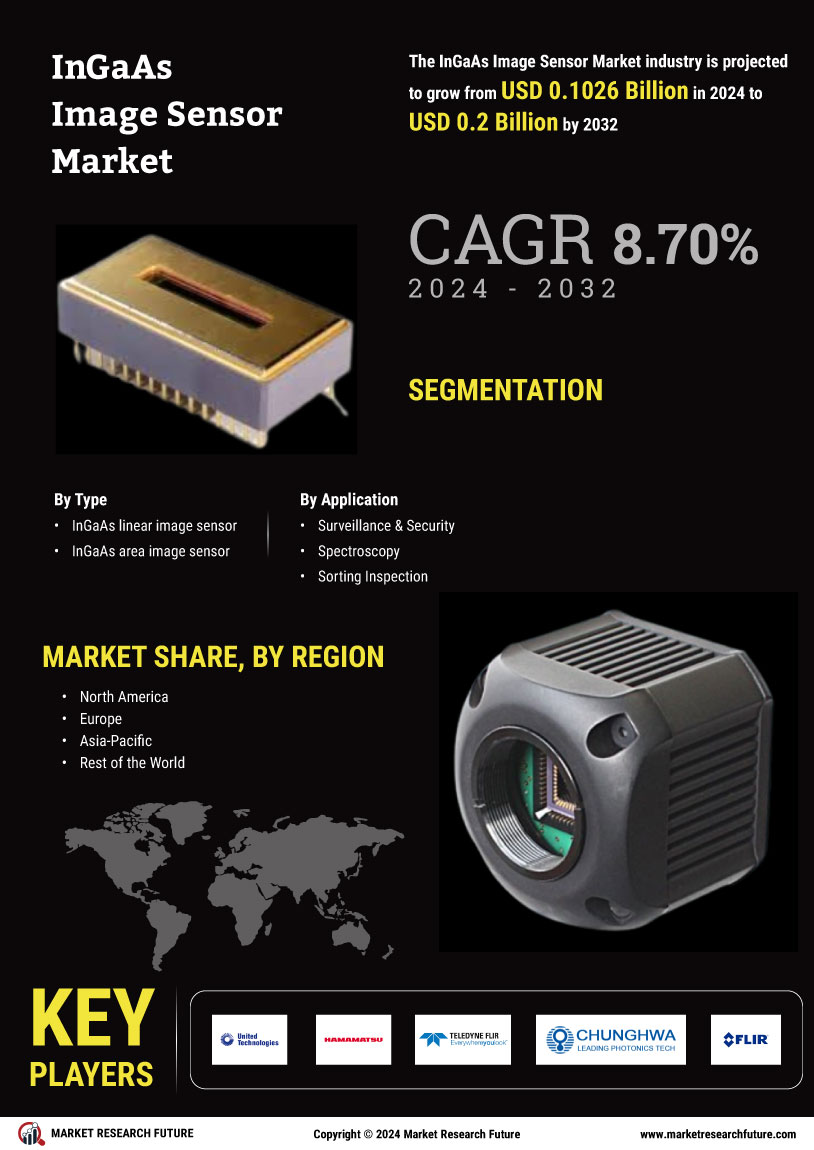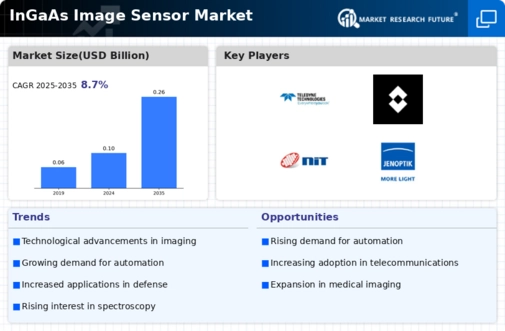Leading market players are investing heavily in research and development in order to expand their product lines, which will help the InGaAs Image Sensor Market, grow even more. Market participants are also undertaking a variety of strategic activities to expand their global footprint, with important market developments including new product launches, contractual agreements, mergers and acquisitions, higher investments, and collaboration with other organizations. To expand and survive in a more competitive and rising market climate, InGaAs Image Sensorindustry must offer cost-effective items.
Manufacturing locally to minimize operational costs is one of the key business tactics used by manufacturers in the global InGaAs Image Sensor industry to benefit clients and increase the market sector. In recent years, the InGaAs Image Sensor industry has offered some of the most significant advantages to medicine. Major players in the InGaAs Image Sensor Market, including FLIR Systems, Inc., New Imaging Technologies, Sofradir Group, Xenics, Synergy Optosystems Co., Ltd, Jenoptik, First Sensor AG, SemiConductor Devices, and Luna and others, are attempting to increase market demand by investing in research and development operations.
Hamamatsu Photonics K.K. is a Japanese manufacturer of optical sensors, electric light sources, and other optical equipment, as well as the instruments that utilise them, for scientific, technological, and medical applications. Heihachiro Horiuchi, a former student of "the father of Japanese television" Kenjiro Takayanagi, created the company in 1953. Hermann Simon, a famous German business author and thinker, cited Hamamatsu as an example of a "Hidden Champion" in his book Hidden Champions of the Twenty-First Century: The Success Strategies of Unknown World Market Leaders.
In 2019, Hamamatsu Photonics, a major optical sensor maker, has introduced a new line of high-speed InGaAs image sensors. The new sensors can capture images at up to 250 frames per second, making them perfect for high-speed imaging applications in industrial, scientific, and medical settings.
UTC Aerospace Systems (UTAS), headquartered in Charlotte, North Carolina, was one of the world's major providers of aerospace and defense goods. In August 2012, parent company United Technologies Corporation merged their existing business Hamilton Sundstrand with the freshly acquired Goodrich Corporation to form the company. In 2012, Sensors Unlimited, a major maker of InGaAs image sensors, was bought by UTC Aerospace Systems. UTC Aerospace Systems was able to increase its product offering in the defense and aerospace industries as a result of the acquisition.














